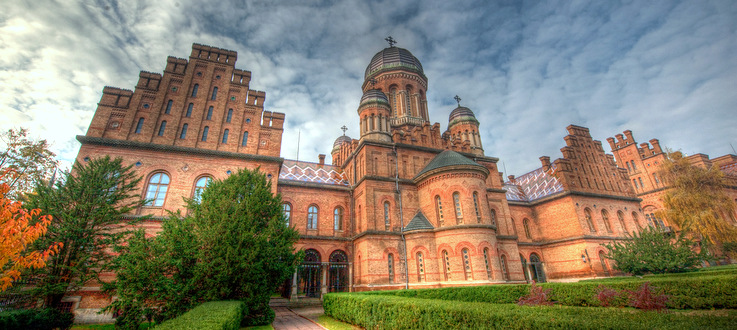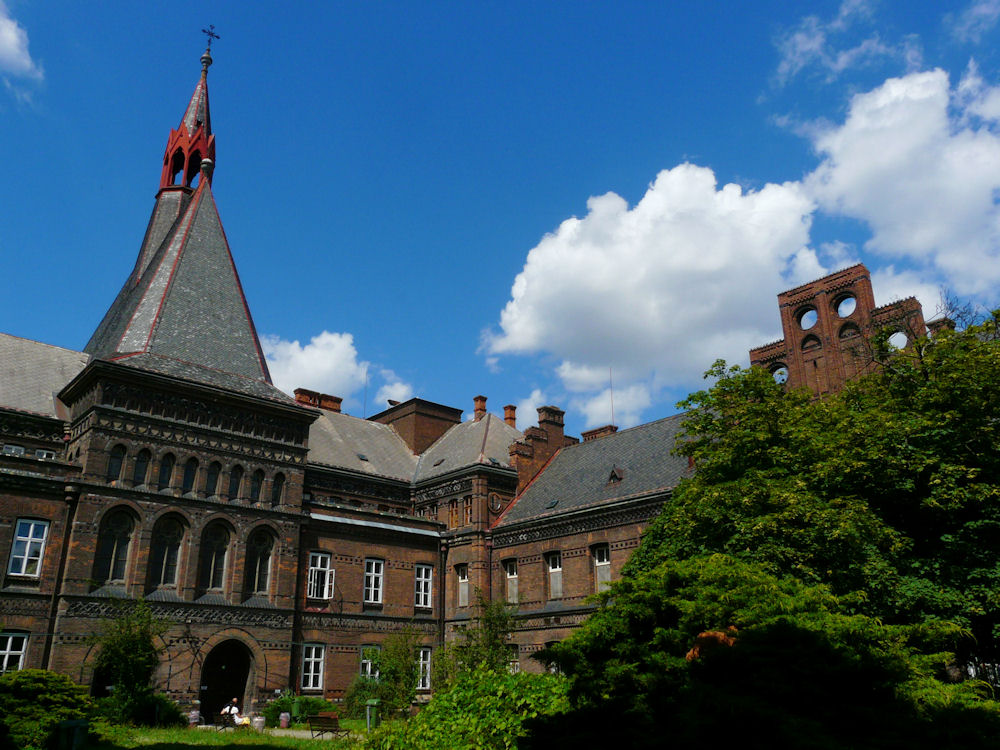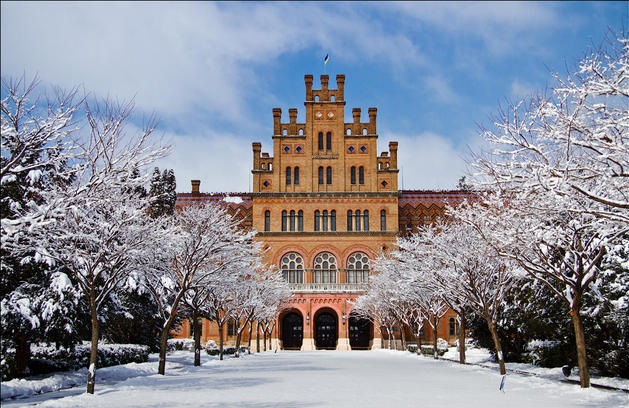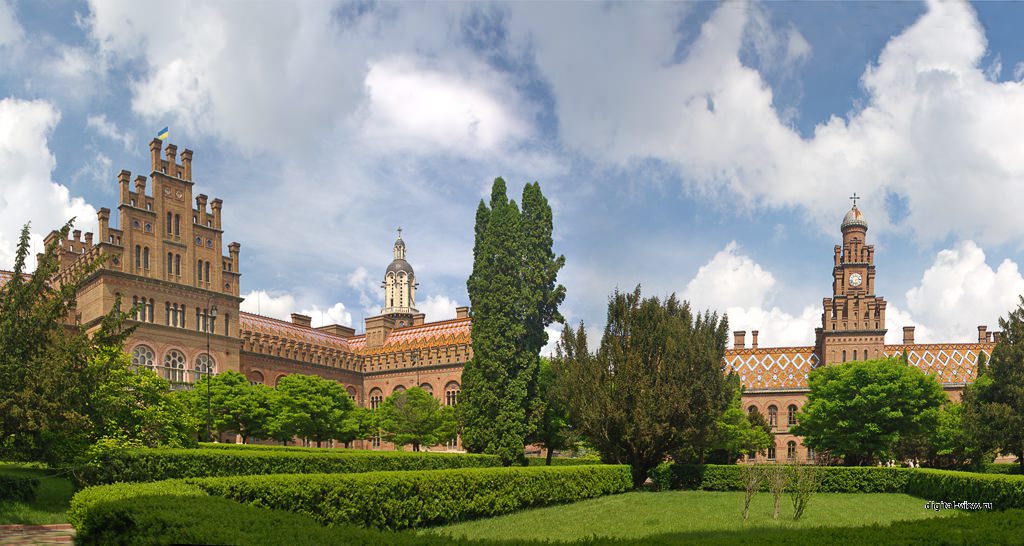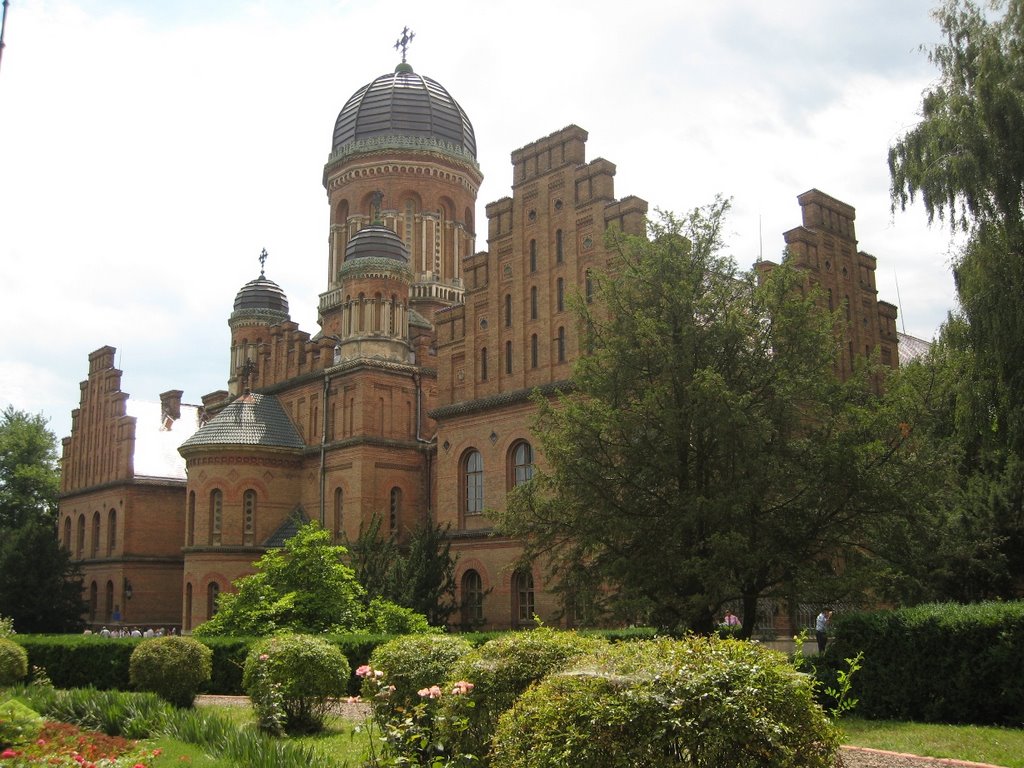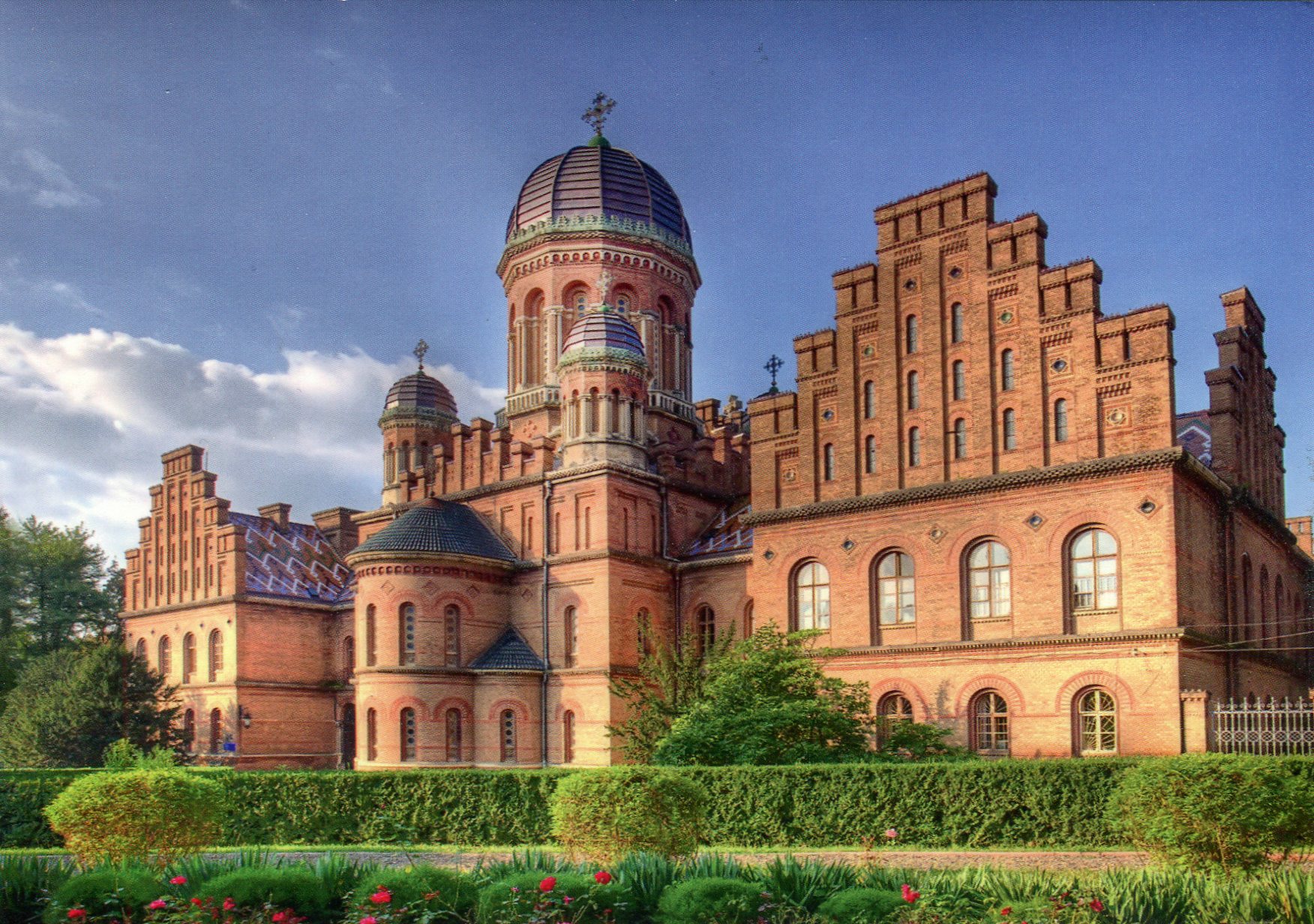The Residence of Bukovinian and Dalmatian Metropolitans in Chernivtsi, Ukraine was built between the years 1864 - 1882 to the designs of the Czech architect, Josef Hlávka. The Residence, whose buildings are now part of Chernivtsi University, was declared a UNESCO World Heritage Site in 2011.
In preparing his designs, Hlávka researched the building traditions of the region, and published an article, "Buildings of the Eastern Greek Church in Bukovina", in the Austrian Review in 1866. Hlávka's proposals for the complex included not only the bishop's palace but also administrative offices, meeting halls, a library, a choir school, a museum of church art and a chapel. The resulting work combines Byzantine and Moorish style, with the Alhambra as one inspiration.
Construction commenced in 1864 but was subjected to substantial delays due to technical problems, the illness of Hlávka from 1872 onwards, and to disagreements between Hlávka and the local administration, which led to Hlávka's resignation. The incompetence of Hlávka's successor, Feliks Ksiezarski, further delayed progress. The building and churches were consecrated in the winter of 1882/3




